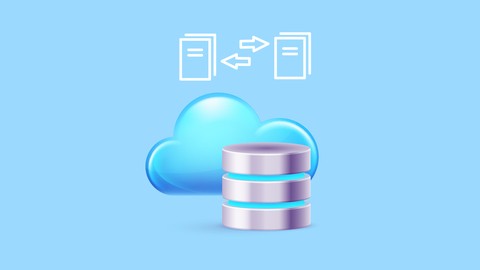
Data Analysis with Oracle SQL
Data Analysis with Oracle SQL, available at $39.99, has an average rating of 3.7, with 54 lectures, based on 21 reviews, and has 1706 subscribers.
You will learn about Retrieve Data from multiple tables using table joins Retrievie Data with Analytic Functions Retrieve Data with SET Operators Retrieve data using GROUP BY and HAVING clause Retrieve data using Sub-Queries Restrict and Sort Data Use Distinct to eliminate duplicate data Create views and retrieve data from them Use WHERE Clause for filtering data Use SELECT Statements to retrieve data Use ORDER BY Clause to sort data Use FROM clause to specify what table data is retrieved from Use LIKE Operator and wild cards to search data patterns Use Describe to view table structure Use NOT and IS NULL operators This course is ideal for individuals who are Beginner Database Administrators or Beginner Data Analyst or Beginner Data warehouse administrators or Beginner Database Administrators It is particularly useful for Beginner Database Administrators or Beginner Data Analyst or Beginner Data warehouse administrators or Beginner Database Administrators.
Enroll now: Data Analysis with Oracle SQL
Summary
Title: Data Analysis with Oracle SQL
Price: $39.99
Average Rating: 3.7
Number of Lectures: 54
Number of Published Lectures: 54
Number of Curriculum Items: 54
Number of Published Curriculum Objects: 54
Original Price: $94.99
Quality Status: approved
Status: Live
What You Will Learn
- Retrieve Data from multiple tables using table joins
- Retrievie Data with Analytic Functions
- Retrieve Data with SET Operators
- Retrieve data using GROUP BY and HAVING clause
- Retrieve data using Sub-Queries
- Restrict and Sort Data
- Use Distinct to eliminate duplicate data
- Create views and retrieve data from them
- Use WHERE Clause for filtering data
- Use SELECT Statements to retrieve data
- Use ORDER BY Clause to sort data
- Use FROM clause to specify what table data is retrieved from
- Use LIKE Operator and wild cards to search data patterns
- Use Describe to view table structure
- Use NOT and IS NULL operators
Who Should Attend
- Beginner Database Administrators
- Beginner Data Analyst
- Beginner Data warehouse administrators
- Beginner Database Administrators
Target Audiences
- Beginner Database Administrators
- Beginner Data Analyst
- Beginner Data warehouse administrators
- Beginner Database Administrators
Oracle database is one of the top and most widely used relational database management systems in the world .
This beginners course will teach you how to retrieve data from an oracle database.
We will start off by downloading and installing oracle database 11g express which is free to use. Then we will install TOAD which is a tool we will be using to connect to the oracle database and retrieve data.
Topics we will cover in this course includes:
Retrieving Data�
Using SELECT Statements
Using FROM clause
Using WHERE Clause for filtering data
Using NOT Operator
Using the LIKE Operator
Using IS NULL
Using ORDER BY Clause
Using DISTINCT
Using Describe
Using and creating views
Using Sub-Query
Restricting and Sorting Data
Using ORDER BY Clause
Using GROUP BY and HAVING Clause
Retrieving Data with Aggregate Functions�
Introduction to aggregate functions
Using AVG function
Using COUNT function
Using MAX function
Using MIN function
Retrieving Data with Table Joins
Introduction to Table Joins
Using Equi Joins
Using Non Equi Joins
Using Cartesian Join
Using Outer Join
Using Self Join
Retrieving Data with Analytic Functions�
Introduction to Analytic Functions
The Syntax
Partition By Clause
First and Last Function
Row number Functions
Dense Rank Function
Lag Function
LEAD Function
RANK Function
Retrieving Data with SET Operators�
Using UNION ALL SET Operator
UNION SET Operator
Using INTERSECT Operator
Using Minus Operator
By the end of this course you will have enough skill to retrieve data from an oracle database.
Course Curriculum
Chapter 1: Setting Up Oracle Database
Lecture 1: Introduction
Lecture 2: What is SQL
Lecture 3: Download Oracle 11g Database
Lecture 4: Install Oracle 11g Database
Lecture 5: Unlock Sample Schema fr Oracle 11g
Lecture 6: Install Oracle 18c
Lecture 7: SQLplus
Lecture 8: Unlock Schema for Oracle 18c
Lecture 9: Install Oracle SQL Developer
Lecture 10: Connect to Oracle with SQL Developer
Lecture 11: Download TOAD
Lecture 12: Install TOAD
Lecture 13: Connecting to database with TOAD
Lecture 14: What are TNSNames
Lecture 15: Creating TNSNames
Chapter 2: Retrieving Data
Lecture 1: Using SELECT Statements
Lecture 2: Using FROM clause
Lecture 3: Using WHERE Clause for filtering data
Lecture 4: Using NOT Operator
Lecture 5: Using the LIKE Operator
Lecture 6: Using IS NULL
Lecture 7: Using ORDER BY Clause
Lecture 8: Using DISTINCT
Lecture 9: Using Describe
Lecture 10: Using and creating views
Lecture 11: Using Sub-Query
Lecture 12: Restricting and Sorting Data
Lecture 13: Using ORDER BY Clause
Lecture 14: Using GROUP BY and HAVING Clause
Chapter 3: Retrieving Data with Aggregate Functions
Lecture 1: Introduction to aggregate functions
Lecture 2: Using AVG function
Lecture 3: Using COUNT funcction
Lecture 4: Using MAX function
Lecture 5: Using MIN function
Chapter 4: Retrieving Data with Table Joins
Lecture 1: Introduction to Table Joins
Lecture 2: Using Equi Joins
Lecture 3: Using Non Equi Joins
Lecture 4: Using Cartesian Join
Lecture 5: Using Outer Join
Lecture 6: Using Self Join
Chapter 5: Retrieving Data with Analytic Functions
Lecture 1: Introduction to Analytic Functions
Lecture 2: The Syntax
Lecture 3: Partition By Clause
Lecture 4: First and Last Function
Lecture 5: Row number Functions
Lecture 6: Dense Rank Function
Lecture 7: Lag Function
Lecture 8: LEAD Function
Lecture 9: RANK Function
Chapter 6: Retrieving Data with SET Operators
Lecture 1: Using UNION ALL SET Operator
Lecture 2: UNION SET Operator
Lecture 3: Using INTERSECT Operator
Lecture 4: Using Minus Operator
Lecture 5: Thank You
Instructors
-
Bluelime Learning Solutions
Making Learning Simple
Rating Distribution
- 1 stars: 1 votes
- 2 stars: 2 votes
- 3 stars: 3 votes
- 4 stars: 10 votes
- 5 stars: 5 votes
Frequently Asked Questions
How long do I have access to the course materials?
You can view and review the lecture materials indefinitely, like an on-demand channel.
Can I take my courses with me wherever I go?
Definitely! If you have an internet connection, courses on Udemy are available on any device at any time. If you don’t have an internet connection, some instructors also let their students download course lectures. That’s up to the instructor though, so make sure you get on their good side!
You may also like
- Best Public Speaking Courses to Learn in March 2025
- Best Affiliate Marketing Courses to Learn in March 2025
- Best Email Marketing Courses to Learn in March 2025
- Best Social Media Management Courses to Learn in March 2025
- Best SEO Optimization Courses to Learn in March 2025
- Best Content Creation Courses to Learn in March 2025
- Best Game Development Courses to Learn in March 2025
- Best Software Testing Courses to Learn in March 2025
- Best Big Data Courses to Learn in March 2025
- Best Internet Of Things Courses to Learn in March 2025
- Best Quantum Computing Courses to Learn in March 2025
- Best Cloud Computing Courses to Learn in March 2025
- Best 3d Modeling Courses to Learn in March 2025
- Best Mobile App Development Courses to Learn in March 2025
- Best Graphic Design Courses to Learn in March 2025
- Best Videography Courses to Learn in March 2025
- Best Photography Courses to Learn in March 2025
- Best Language Learning Courses to Learn in March 2025
- Best Product Management Courses to Learn in March 2025
- Best Investing Courses to Learn in March 2025






















